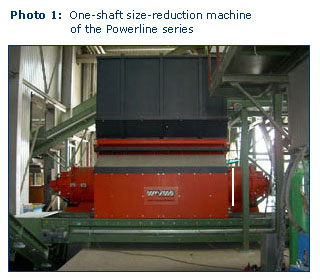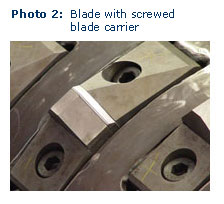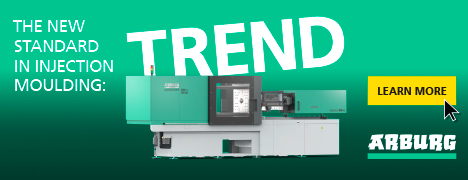|
Processing waste with a high thermal value to substitute combustibles
Waste to Energy
Harald Hoffmann, WEIMA Maschinenbau GmbH
With the taking effect of the TASi (Technical Regulations on Estate Waste) in 2005, non-treated waste must no longer be disposed of and deposited. Commercial and industrial residues with a high thermal value such as rejects from paper industry, punchings from rubber and plastics, and other mono-fractions which are characterised by homogeneity and constant combustible properties through mechanical treatment can be processed to become quality-assured substitute combustibles. In the same way, heterogeneous domestic and industrial waste mixtures with a high thermal value can be conditioned. The extension and/or reconstruction of existing installations offers an appropriate possibility to use available capacities even with regard to the increasing demands in statutory provisions. A current example is the reconstruction of a sorting and separating plant for mixed building waste of Bautrans Umweltservice GmbH in Karlruhe through the general contractor Rema Anlagenbau GmbH. The heart of the new substitute combustible installation is made up by two one-shaft size-reducing machines of the new Powerline series (Photo 1) of WEIMA Maschinenbau GmbH, Ilsfeld (www.weima.com).
Extension of the field of application with high flexibility
 The existing installation consists of components for feeding, for sorting, for screening, a sifter unit for separating of heavy and light fraction, for metal separation and for a subsequent sorting of mixed building waste. The installation was extended by an advance size-reducer and two one-shaft size-reduction machines of the new Powerline series of WEIMA Maschinenbau GmbH. The reconstruction of existing installations permits to extend the field of application and to increase the capacity with the possibility to use available components such as sorting booths, conveying belts, magnets, screens, sifters, etc. A flexible interface connection also permits to use individual plant parts.
The existing installation consists of components for feeding, for sorting, for screening, a sifter unit for separating of heavy and light fraction, for metal separation and for a subsequent sorting of mixed building waste. The installation was extended by an advance size-reducer and two one-shaft size-reduction machines of the new Powerline series of WEIMA Maschinenbau GmbH. The reconstruction of existing installations permits to extend the field of application and to increase the capacity with the possibility to use available components such as sorting booths, conveying belts, magnets, screens, sifters, etc. A flexible interface connection also permits to use individual plant parts.
Waste with a high calorific value from mono-charges, production rejects, industrial waste, rejects from paper industry, paper, carpets, etc. which cannot be fed to a direct recycling and utilisation of recyclates are directly processed to the requested final grain size without any size reduction. Mixed fractions such as mixed building waste, industrial and domestic waste, however, pass through the complete installation. Marketable ingredients such as films, paper and cardboard, wood, etc. are removed out of these material flows (Photo 2) by means of manual picking and metals additionally by means of metals. Furthermore, all non-combustible ingredients such as concrete pieces, stones, etc. are separated by means of several screening and sorting stages. The remaining oversize products now will also be fed to the two subsequent size-reducers and processed to become substitute combustibles. The plant operator now is in a position to achieve another high value added by processing this fraction with a high thermal value which so far has been deposited.
One-shaft size-reduction machines of the Powerline series
The one-shaft size-reduction machines of the new Powerline series integrated in the installation have been developed on the basis of practice-oriented values gained by experience and have been particularly designed and constructed for the task of producing substitute combustibles. Besides the adjustment to the materials to be reduced in size a required operational capacity with a defined grain size range is decisive. Rotor widths of 2,000 mm and 3,000 mm are offered. The size of the flat blades attached to the rotor circumference and deliverable in several blade qualities varies from 60 to 100 mm. Depending on the material to be reduced in size and the drive rating used their number is between 64 and 153. Depending on the output quality the screen hole sizes vary between 15 mm and 100 mm.
Drive ratings are between 160 kW and 2x132 kW which - in case of the electromechanic drive - are transferred to the rotor via frequency converter and pulleys. For materials that are very strongly contaminated with disturbing substances optionally a hydraulic drive is offered. The overall weight of a machine is up to 40 tons.
High throughputs with optimal output qualities
In accordance with the machine size and depending on the material to be reduced in size and the screen hole size used the operational capacity is between 4 and 20 t/h. This considerable increase in operational capacity results from essential optimisations with regard to several equipment features: The diameter increased to 800 mm of the flat rotor made highly resistant to abrasion by coating makes available a considerably increased rotor surface and thus also a considerably increased screen surface through the holes of which material is carried away. The speed range in comparison with earlier designs is considerably increased and is between 80 and 200 min-1 which can be infinitely adjusted. The use of a second counter-blade doubles the number of cutting operations. Furthermore, it is positioned such that there is a largest possible screening surface. The cutting gap can be exactly adjusted via a flexible counter-blade rail. An exact and close cutting gap permits a high cutting quality.
High safety and low operating cost
 Depending on the task to be performed the blade carriers are either screwed or welded into the rotor and therefore can be exchange fast also in case of possible damage. The flat blades are clamped into this blade carrier with a wedge which in turn is connected by screws with the blade carrier (Photo 3). The blades themselves are not tightened by screws which permits a fast blade change. Both the rotor blades and the counter-blades can be reversed. In addition, the rotor blades can be reground which is normally more cost effective than a complete exchange. Both counter-blades are segmented such that the complete exchange necessitated by wear is facilitated by segmentation. With a possible damage not the whole counter-blade will have to be replaced but only the segment affected. In addition to the control panel at the switch cabinet there is a second control panel directly located at the machine which permits a fast interference of the operating staff. The feeding funnel possesses a double wall which considerably reduces the noise level. Large revision doors and a hydraulically slewable screen basket permit an easy and fast access to the rotor as well as to blades and counter-blades. This warrants short setting times for maintenance and blade exchange and - thus - a high availability. Through the use of a newly developed slipping clutch which responds at a certain torque the machines are resistant with regard to disturbing substances. If this torque is exceeded, a sensor is activated and the frequency converter will brake the drive. The energy released will be fed back into the electrical supply network. In contrast with the conventional use of resistances for the reduction of brake energy this considerably minimises the fire hazard through dust and dirt.
Depending on the task to be performed the blade carriers are either screwed or welded into the rotor and therefore can be exchange fast also in case of possible damage. The flat blades are clamped into this blade carrier with a wedge which in turn is connected by screws with the blade carrier (Photo 3). The blades themselves are not tightened by screws which permits a fast blade change. Both the rotor blades and the counter-blades can be reversed. In addition, the rotor blades can be reground which is normally more cost effective than a complete exchange. Both counter-blades are segmented such that the complete exchange necessitated by wear is facilitated by segmentation. With a possible damage not the whole counter-blade will have to be replaced but only the segment affected. In addition to the control panel at the switch cabinet there is a second control panel directly located at the machine which permits a fast interference of the operating staff. The feeding funnel possesses a double wall which considerably reduces the noise level. Large revision doors and a hydraulically slewable screen basket permit an easy and fast access to the rotor as well as to blades and counter-blades. This warrants short setting times for maintenance and blade exchange and - thus - a high availability. Through the use of a newly developed slipping clutch which responds at a certain torque the machines are resistant with regard to disturbing substances. If this torque is exceeded, a sensor is activated and the frequency converter will brake the drive. The energy released will be fed back into the electrical supply network. In contrast with the conventional use of resistances for the reduction of brake energy this considerably minimises the fire hazard through dust and dirt.
"WEIMA Maschinenbau GmbH is an important partner for a plant constructor like REMA. Particularly the integration of the size-reduction machines in an existing installation requires great flexibility with regard to the adjustment of downstream and upstream components. For the extension of existing capacities for producing substitute combustibles we see a great future potential with regard to the year 2005 particularly for our company. We will use the strength and the reliability of a partner like WEIMA Maschinenbau GmbH in accordance with our clients' requirements", emphasises Dipl.-Ing. Bernd Conrad, Managing Director of Rema Anlagenbau GmbH, Mölln.
WEIMA Maschinenbau GmbH
Bustadt 6-10
74360 Ilsfeld, Germany
Phone: +49 (0) 7062 9570-0
Fax: +49 (0) 7062 9570-92
Internet: weima.com |
 back to the list
back to the list back to top
back to top
 The existing installation consists of components for feeding, for sorting, for screening, a sifter unit for separating of heavy and light fraction, for metal separation and for a subsequent sorting of mixed building waste. The installation was extended by an advance size-reducer and two one-shaft size-reduction machines of the new Powerline series of WEIMA Maschinenbau GmbH. The reconstruction of existing installations permits to extend the field of application and to increase the capacity with the possibility to use available components such as sorting booths, conveying belts, magnets, screens, sifters, etc. A flexible interface connection also permits to use individual plant parts.
The existing installation consists of components for feeding, for sorting, for screening, a sifter unit for separating of heavy and light fraction, for metal separation and for a subsequent sorting of mixed building waste. The installation was extended by an advance size-reducer and two one-shaft size-reduction machines of the new Powerline series of WEIMA Maschinenbau GmbH. The reconstruction of existing installations permits to extend the field of application and to increase the capacity with the possibility to use available components such as sorting booths, conveying belts, magnets, screens, sifters, etc. A flexible interface connection also permits to use individual plant parts.
 Depending on the task to be performed the blade carriers are either screwed or welded into the rotor and therefore can be exchange fast also in case of possible damage. The flat blades are clamped into this blade carrier with a wedge which in turn is connected by screws with the blade carrier (Photo 3). The blades themselves are not tightened by screws which permits a fast blade change. Both the rotor blades and the counter-blades can be reversed. In addition, the rotor blades can be reground which is normally more cost effective than a complete exchange. Both counter-blades are segmented such that the complete exchange necessitated by wear is facilitated by segmentation. With a possible damage not the whole counter-blade will have to be replaced but only the segment affected. In addition to the control panel at the switch cabinet there is a second control panel directly located at the machine which permits a fast interference of the operating staff. The feeding funnel possesses a double wall which considerably reduces the noise level. Large revision doors and a hydraulically slewable screen basket permit an easy and fast access to the rotor as well as to blades and counter-blades. This warrants short setting times for maintenance and blade exchange and - thus - a high availability. Through the use of a newly developed slipping clutch which responds at a certain torque the machines are resistant with regard to disturbing substances. If this torque is exceeded, a sensor is activated and the frequency converter will brake the drive. The energy released will be fed back into the electrical supply network. In contrast with the conventional use of resistances for the reduction of brake energy this considerably minimises the fire hazard through dust and dirt.
Depending on the task to be performed the blade carriers are either screwed or welded into the rotor and therefore can be exchange fast also in case of possible damage. The flat blades are clamped into this blade carrier with a wedge which in turn is connected by screws with the blade carrier (Photo 3). The blades themselves are not tightened by screws which permits a fast blade change. Both the rotor blades and the counter-blades can be reversed. In addition, the rotor blades can be reground which is normally more cost effective than a complete exchange. Both counter-blades are segmented such that the complete exchange necessitated by wear is facilitated by segmentation. With a possible damage not the whole counter-blade will have to be replaced but only the segment affected. In addition to the control panel at the switch cabinet there is a second control panel directly located at the machine which permits a fast interference of the operating staff. The feeding funnel possesses a double wall which considerably reduces the noise level. Large revision doors and a hydraulically slewable screen basket permit an easy and fast access to the rotor as well as to blades and counter-blades. This warrants short setting times for maintenance and blade exchange and - thus - a high availability. Through the use of a newly developed slipping clutch which responds at a certain torque the machines are resistant with regard to disturbing substances. If this torque is exceeded, a sensor is activated and the frequency converter will brake the drive. The energy released will be fed back into the electrical supply network. In contrast with the conventional use of resistances for the reduction of brake energy this considerably minimises the fire hazard through dust and dirt.




